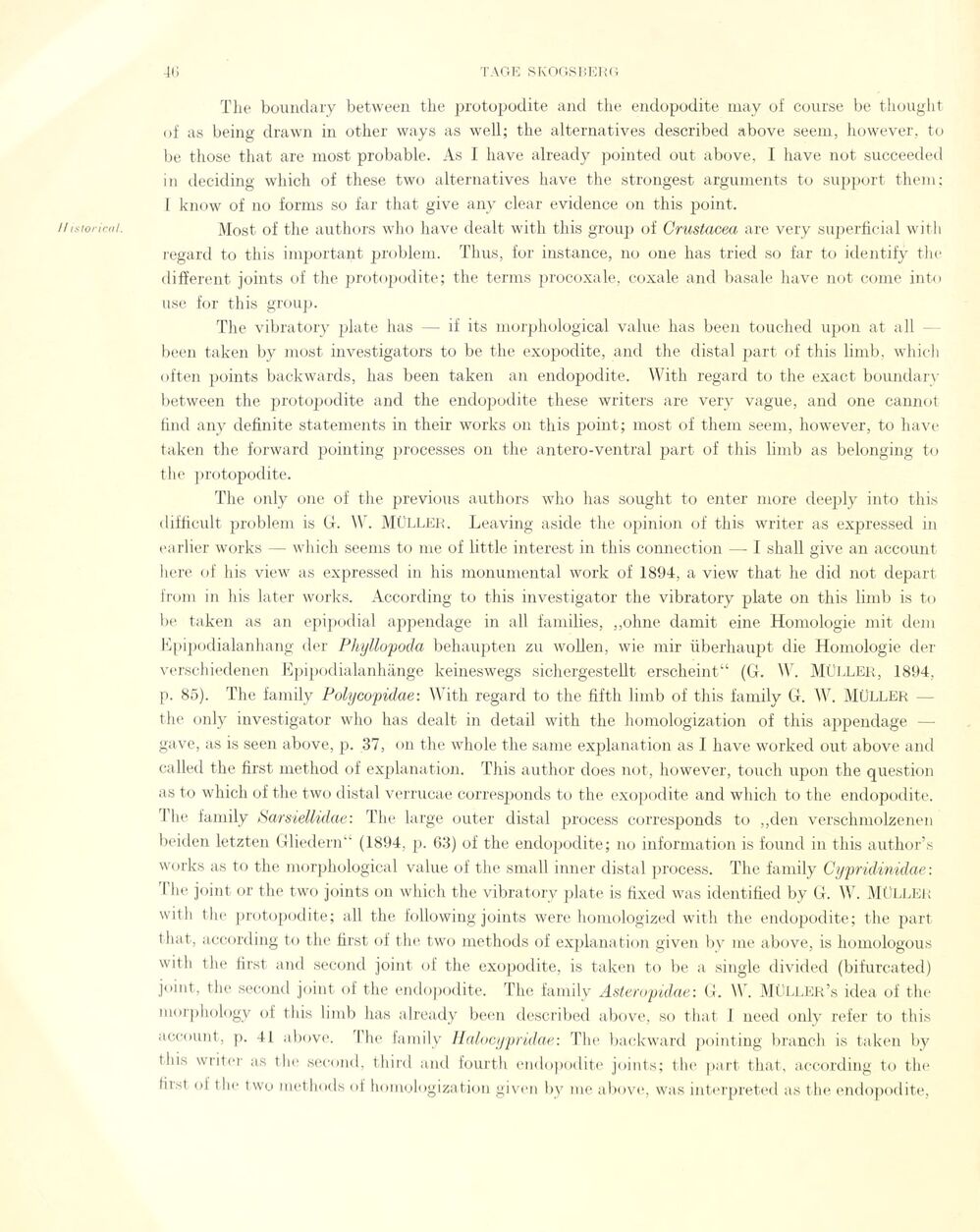
Full resolution (JPEG) - On this page / på denna sida - Sidor ...

<< prev. page << föreg. sida << >> nästa sida >> next page >>
Below is the raw OCR text
from the above scanned image.
Do you see an error? Proofread the page now!
Här nedan syns maskintolkade texten från faksimilbilden ovan.
Ser du något fel? Korrekturläs sidan nu!
This page has never been proofread. / Denna sida har aldrig korrekturlästs.
The boundary between the protopodite and the endopodite may of course be thought
of as being drawn in other ways as well; the alternatives described above seem, however, tu
be those that are most probable. As I have already pointed out above, I have not succeeded
in deciding which of these two alternatives have the strongest arguments to support them;
I know of no forms so far that give any clear evidence on this point.
Most of the authors who have dealt with this group of Crustacea are very superficial witli
regard to this important problem. Thus, for instance, no oue has tried so far to identify the
different joints of the protopodite; the terms procoxale, coxale and basale have not come into
use for this group.
The vibratory plate has — if its morphological value has been touch ed upon at all
-been taken by most investigators to be the exopodite, and the distal part of this limb, which
often points backwards, has been taken an endopodite. With regard to the exact boundary
between the protopodite and the endopodite these writers are very vague, and one cannot
find any definite statements in their works on this point; most of them seem, however, to have
taken the forward pointing processes on the antero-ventral part of this limb as belonging to
the protopodite.
The only one of the previous authors who has sought to enter more deeply into this
difficult problem is Gr. W. MÜLLER. Leaving aside the opinion of this writer as expressed in
earlier works — which seems to me of little interest in this connection — I shall give an account
liere of his view as expressed in his monumental work of 1894, a view that he did not départ
from in his later works. According to this investigator the vibratory plate on this limb is to
be taken as an epipodial appendage in all families, „ohne damit eine Homologie mit dem
Epipodialanhang der Pkyllopoda behaupten zu wollen, wie mir überhaupt die Homologie der
verschiedenen Epipodialanhänge keineswegs sichergestellt erscheint“ (G. W. MÜLLER, 1894,
p. 85). The family Polycopidae: With regard to the fiftli limb of this farnily G. W. MÜLLER
-the only investigator who has dealt in detail with the homologization of this appendage —
gave, as is seen above, p. 37, on the whole the same expia na t ion as I have worked out above and
called the first method of explanation. This author does not, however, touch upon the question
as to which of the two distal verrucae corresponds to the exopodite and which to the endopodite.
The family Sarsiellidae: The large outer distal process corresponds to „den verschmolzenen
beiden letzten Gliedern“ (1894, p. 63) of the endopodite; no information is fourni in this author’s
works as to the morphological value of the small inner distal process. The family Cypridinidae:
The joint or the two joints on which the vibratorv plate is fixed was identified by G. W. MÜLLER
with the protopodite; all the folio wing joints were homologized witli the endopodite; the part
that, according to the first of the two methods of explanation given by me above, is homologous
witli the first and second joint of the exopodite, is taken to be a single divided (bifurcated)
joint, the second joint of the endopodite. The family Asteropidae: G. W. MÜLLEr’s idea of the
morphology of this limb has already been described above, so that 1 need only refer to this
account, p. 41 above. The family Halocypridae: The backward pointing branch is taken by
this writer as the second, third and fourth endopodite joints; the part that, according to the
first of the two methods of homologization given by me above, was interpreted as the endopodite,
<< prev. page << föreg. sida << >> nästa sida >> next page >>